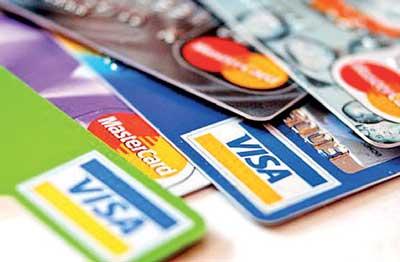Reply To:
Name - Reply Comment

In what appears to be a second round effect of the April 8 mega policy rate hike, banks delivered another hike in interest rates charged on credit cards as the Central Bank lifted administrative caps on credit card and other select loans, giving complete leeway for banks to set the prices of such loans.
 Banks which initially raised their rates from 20 percent to 30 percent from May onwards in response to the April policy rate hike are now raising their rates again to the north of 40 percent as one bank yesterday announced its decision to raise cards’ interest rate by another 6 percent to 36 percent effective from July.
Banks which initially raised their rates from 20 percent to 30 percent from May onwards in response to the April policy rate hike are now raising their rates again to the north of 40 percent as one bank yesterday announced its decision to raise cards’ interest rate by another 6 percent to 36 percent effective from July.
As uncertainty mounts and the pressure builds up again on Treasury yields on the back of the worsening economic crisis, banks are adjusting their rates to effectively prevent people from swiping their cards when the going gets tougher with runaway prices.
Other banks have also indicated that they are considering similar moves and would follow suit with sizable increases in their rates as they run a greater risk of non-performing loans from cards.
As the Monetary Board accelerated the pace of policy rate hikes since January onwards, the Central Bank in March raised the hitherto prevalent ceiling rate on credit cards from 18 percent to 20 percent only to fully remove any administrative rate caps on the collateral-free pre-approved loan facilities on April 10.
The monthly review of card issuance data showed a notable deceleration in new card approvals by banks, specially in April, and banks are further tightening their card approval criteria to effectively send applicants away.
The balance enhancement requests are declined more often than not, compared to a few months ago due to heightened credit risk.
People, whose real incomes got hammered specially after the country was driven into hyper inflation from March onwards, turned increasingly towards their credit cards, but the soaring rates are making that option even harder and more expensive for the users.
Higher rates put a damper on new credit and the credit-led demand for consumption thereby helping to cool down the demand side inflation.
But, in Sri Lanka what currently exists are the supply-driven price pressures, worsened by the botched rupee float which sent the official price index closer to 50 percent in May.